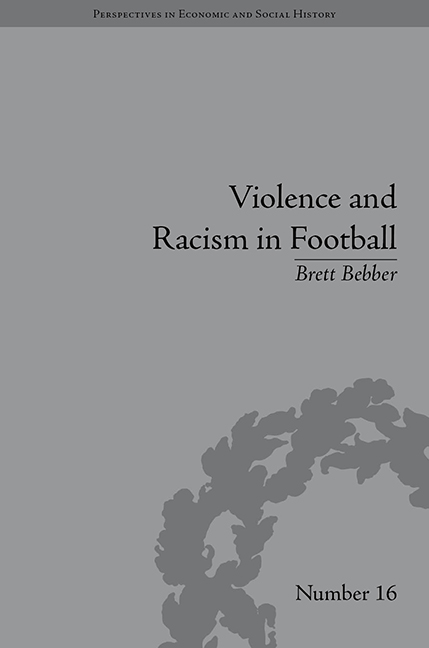Book contents
- Frontmatter
- CONTENTS
- Acknowledgements
- List of Figures
- Introduction: Sport, Politics and History in Post-War Britain
- Part I Violence and Politics in British Football
- Part II The Total Policy of Containment
- 3 Violent Environments: Physical Space, Discipline and Football Disorder
- 4 Police and the State: Tactics, Networks and the Development of Football Policing
- 5 Stretching Punishment: The State, Law and Order, and Threatening the Spectator
- Part III Racism and Cultural Conflict in British Football
- Conclusion: Legacies of Violence in British Football
- Notes
- Bibliography
- Index
5 - Stretching Punishment: The State, Law and Order, and Threatening the Spectator
from Part II - The Total Policy of Containment
- Frontmatter
- CONTENTS
- Acknowledgements
- List of Figures
- Introduction: Sport, Politics and History in Post-War Britain
- Part I Violence and Politics in British Football
- Part II The Total Policy of Containment
- 3 Violent Environments: Physical Space, Discipline and Football Disorder
- 4 Police and the State: Tactics, Networks and the Development of Football Policing
- 5 Stretching Punishment: The State, Law and Order, and Threatening the Spectator
- Part III Racism and Cultural Conflict in British Football
- Conclusion: Legacies of Violence in British Football
- Notes
- Bibliography
- Index
Summary
The previous two chapters examined coordinated police tactics and physical space divisions, emphasizing the state's use of aggressive tactics to prevent football violence. Throughout government discussions, authorities failed to consider social research into the background of football violence, instead opting for increased punishment as its most effective disincentive. In this chapter, evidence will show that football governors also explored ways of manipulating the legal system in order to enact extreme punitive measures against rowdy football supporters, arguably exacerbating and provoking the behaviour they sought to control. In the late 1960s and 1970s, Home Office and Department of Environment officials explored how to maximize legal punishment by pressuring the magistrates' courts, working to change available arrest charges and exploring new sentencing options. Under pressure from MPs, police authorities and the public, sports governors attempted to appease calls for swift justice and harsh penalization. As moral anxieties about football violence developed, government officials responded by endorsing law-and-order principles and attempted to deter violence through disproportionate punishment. As football violence escalated and became a political embarrassment, government officials carefully inquired into ways of manipulating the process of conviction and sentencing for football spectators. Several government parties explored punitive measures like steeper fines, extended custodial sentences, juvenile detention, exclusion from matches and even corporal punishment, which were met with varying levels of success. In doing so, successive governments again focused on cultural expressions of authority and social rectification rather than the debilitating material circumstances which contributed to outbreaks of social unrest.
- Type
- Chapter
- Information
- Violence and Racism in FootballPolitics and Cultural Conflict in British Society, 1968–1998, pp. 123 - 146Publisher: Pickering & ChattoFirst published in: 2014

